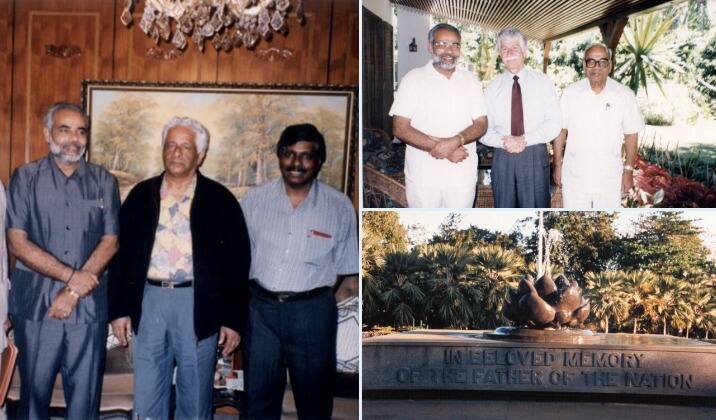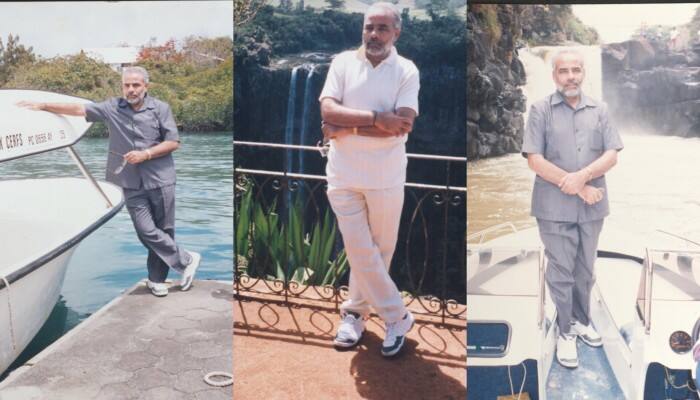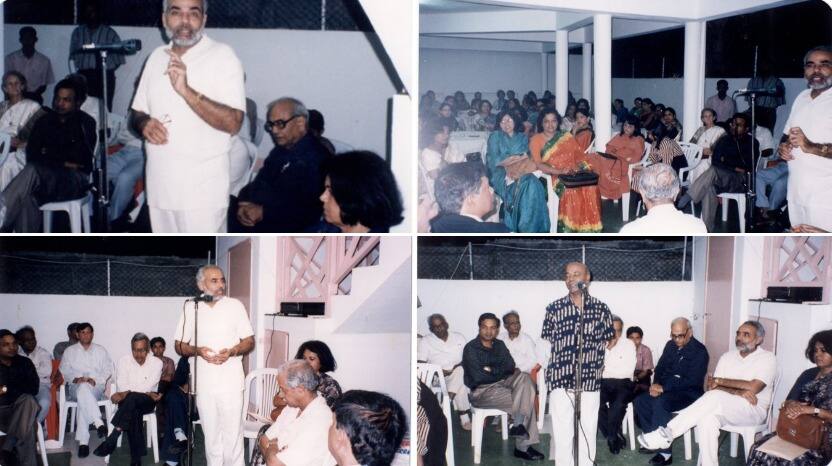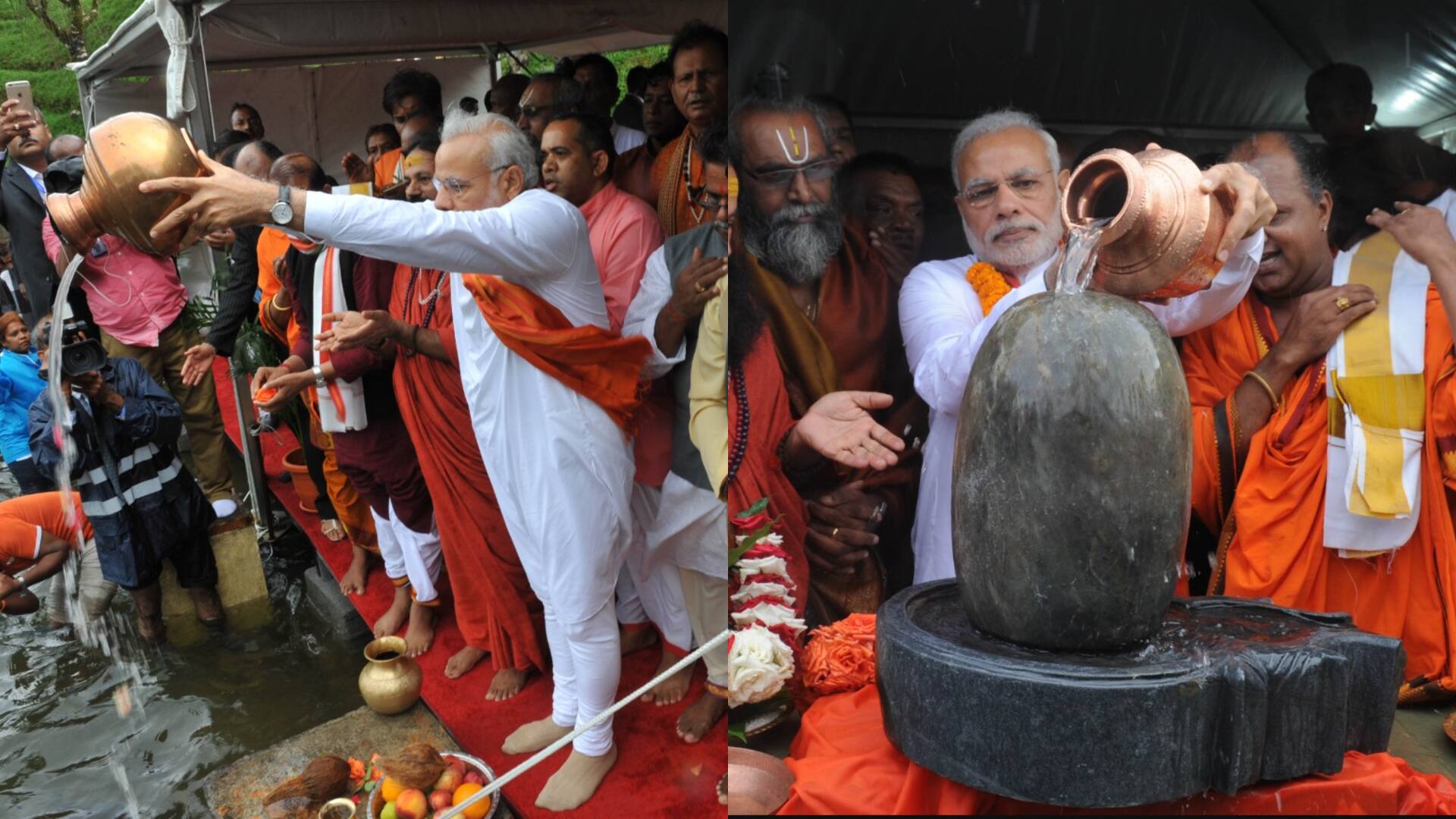synopsis
Prime Minister Narendra Modi’s visit to Mauritius marks a continuation of his deep-rooted connection with the island nation. His bond dates back to 1998, when he first visited ‘Mini India’ for the International Ramayana Conference, fostering enduring ties.
Prime Minister Narendra Modi is set to embark on a two-day state visit to Mauritius on March 11. He will be the chief guest at the island nation's 57th National Day celebrations. This visit is more than a diplomatic engagement—it marks a homecoming of sorts, reinforcing the deep-rooted historical, cultural, and civilizational ties between India and Mauritius.
As India and Mauritius prepare to ink multiple agreements to enhance economic and security cooperation, it is worth reflecting on PM Modi's enduring relationship with the island nation, which dates back decades.
Modi's first visit to Mauritius in 1998
Long before Narendra Modi held public office, his connection with Mauritius was established in October 1998. Between October 2 and 8 that year, he traveled to Mauritius as the BJP’s National General Secretary to address the 'International Ramayana Conference' in Moka.
His speech at the conference emphasized the universal values of Lord Ram and the Ramayana’s role in forging an eternal civilizational bond between India and Mauritius.
During this visit, Modi engaged with key Mauritian leaders, including then-President Cassam Uteem, Prime Minister Navinchandra Ramgoolam, Leader of the Opposition Sir Anerood Jugnauth, and Paul Raymond Bérenger, who would later become Prime Minister. His interactions helped him understand Mauritius’s struggle for independence, which mirrored India’s own freedom movement.

Modi also paid tribute to Sir Seewoosagur Ramgoolam, the Father of the Nation, at the Sir Seewoosagur Ramgoolam Botanic Garden, honoring the leader who spearheaded Mauritius’s independence movement.
Also read: PM Modi’s unique boardroom-style interaction with Lakhpati Didis in Gujarat (WATCH)
Challenges and unwavering commitment
During his 1998 visit, Modi sought a book of bhajans sung by Gandhi, particularly wanting to quote Vaishnav Jan To by Narsinh Mehta. Surprisingly, the Mahatma Gandhi Institute did not have the book, and locating it in Mauritius proved challenging. After extensive efforts, the book was finally found in a personal library, allowing Modi to incorporate its teachings into his speech.
Beyond cultural and spiritual landmarks, Modi also explored Mauritius’s breathtaking natural wonders. He visited the Seven Coloured Earths in Chamarel, the Chamarel Waterfall, and Île aux Cerfs. These experiences shaped his later views on environmental challenges, reinforcing his belief that for island nations, climate change is not just a debate but a grave existential threat.


Modi also highlighted the role of ‘Hindustani,’ a newspaper inspired by Gandhi’s ideals, which fostered unity in Mauritius through its three-language formula—publishing in Gujarati, Hindi, and English. This approach strengthened the linguistic and cultural identity of the Indian diaspora in Mauritius.
Gandhi’s influence on Mauritius and Modi’s 2015 speech
Narendra Modi’s admiration for Mauritius’s deep-rooted connection with Mahatma Gandhi was evident during his 1998 visit. On the eve of Gandhi Jayanti, he experienced firsthand the Indian diaspora’s reverence for the Mahatma.
Recalling this in a 2015 address at the World Hindi Secretariat Building in Mauritius, Modi remarked, “2nd October is still being celebrated in Mauritius with immense fervor. The Gandhi Auditorium is the epicenter of various activities, reinforcing a strong sense of belonging.”
During his 1998 visit, Narendra Modi's engagement with Mauritius went beyond diplomatic meetings—he immersed himself in the island’s cultural and spiritual heritage. At Ganga Talao, a sacred crater lake revered by the Hindu community, he witnessed how Indian traditions continued to thrive far from their roots.
He later recalled this profound connection at Pravasi Bharatiya Divas 2015, emphasizing how the devotion of Mauritians had transformed the lake into a symbol of the Ganga itself. Seventeen years later, on March 12, 2015, Modi returned to Ganga Talao, offering flowers to Maa Ganga, reaffirming the timeless cultural and civilizational bond between India and Mauritius.

India-Mauritius relations in 2025
During this state visit, PM Modi will not only participate in the National Day celebrations but also oversee the signing of several agreements aimed at strengthening economic and security ties. Mauritius remains a crucial partner in India’s ‘Neighbourhood First’ and ‘SAGAR’ (Security and Growth for All in the Region) initiatives, and this visit will further reinforce the strategic partnership between the two nations.
PM Modi’s long-standing bond with Mauritius was perhaps best encapsulated in his 2015 National Day address, where he declared: “If the world looks at Mauritius, they can see a glimpse of what India is like. If the sample is so extraordinary, imagine the greatness of the entire nation!”
As he returns to Mauritius, his message remains the same: “Vive l’amitié entre l’Inde et Maurice!” (Long live the friendship between India and Mauritius.)
)
 subscribe to Asianet News Whatsapp channel by clicking here.
subscribe to Asianet News Whatsapp channel by clicking here.